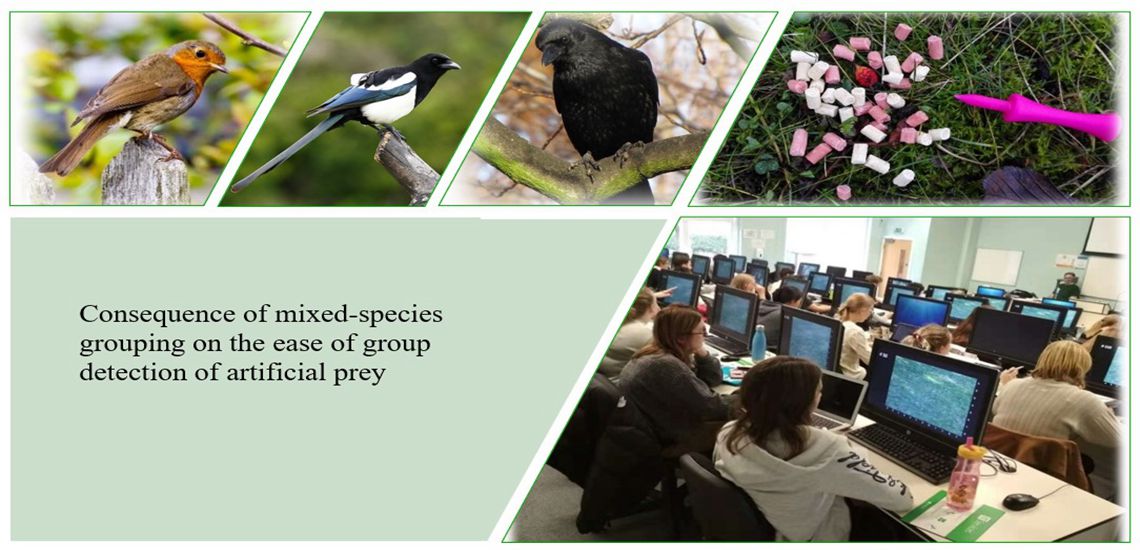Abstract:
Predation is an important selective force for prey organisms, who have also developed different antipredator adaptions. Individuals of many animal species live in groups, which is generally believed to benefit prey through reduced predation risk and/or increased foraging efficiency, etc. Different antipredator mechanisms of grouping prey have been well-developed theoretically and studied extensively for single species groups as compared to mixed-species groups. Yet, there has been a lack of understanding of how some antipredator mechanism (e.g., encounter-dilution effect) would be affected when applied to a mixed-species group due to additional effect of the within-group heterogeneity of prey. In this talk, I will introduce my exploratory study on the topic of the consequence of mixed-species grouping on the risk related to group detection and/or predation risk. This project intended to expand current understanding of the antipredator mechanisms for heterogeneous prey groups of multi-species or more broadly multi-phenotypes. Using artificial prey (suet pellets) to simulate prey groups, the first three studies empirically examined how the prey group as a whole—varies in prey composition, group size, within-group position and compactness—would affect the ease of detection by free-living animals and ‘human predators’. Then, I used images of a polymorphic species of insect prey (Tetris subulata) to simulate their camouflaged occurrence with varied compactness of inter-individual distribution in their natural background. ‘Human predators’ were recruited for prey hunting on the computer screen to explore the effect of within-group polymorphism and compactness on predations risk. The last study investigated grouping effects, especially the effect of the nearest associated species on (coal tit Periparus ater) individual’s vigilance and foraging in the aggregation of avian species feeding on the feeder. Significant effects of group patterns on the detection risk of artificial prey groups were mostly found in experiments with ‘human predators’ rather than animal predators. Despite some contradictory findings between different predator-prey systems, these studies generally lent support to the idea consistent with the ‘giveaway cue’ hypothesis, where polymorphic population with prey of conspicuous morph may attract predators’ attention; and showed that the inclusion of conspicuous prey in mixed-species group would increase the detection risk of prey compared to some single species groups. Together, all the studies demonstrated the influence of mixed-species association on prey detection and/or predation risk.
Speaker: Dr. Hao Gu
Affiliation: XTBG
Time: 4:30 PM, Tuesday, Sep. 6, 2022
Venue: ZOOM 会议平台 会议 ID:312 430 8960 会议密码 PWD:666666
视频下载Download Link链接: https://pan.baidu.com/s/1PUvXhQG88Wy3AXLmPXRg2w Pwd提取码: darj
ZOOM
会议 ID:312 430 8960
会议密码 PWD:666666
国内用户下载地址Download address for domestic users:https://zhumu.com/download
国际用户下载地址Download address for international users:https://zhumu.com/download-intl



